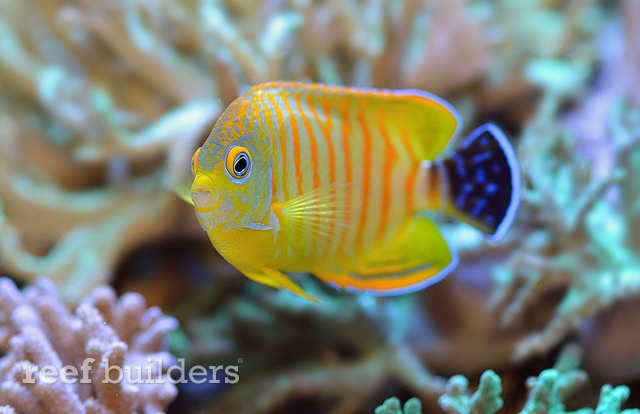Although much of the hype surrounding the Tigerpyge angel has died down since its meteoric appearance a few years ago, there is no denying its sheer beauty and grace. Of all the hybrids we’ve seen and gawked at, the lemon peel and eibl’s angelfish love child still remains one of the most beautiful and organic looking hybrids yet. It’s not everyday you get to see a cross where both parental traits are expressed to such an equal degree, with the fish retaining practically a nearly perfect representation of C. eibli in terms of patterns, yet being coloured entirely in the yellow of C. flavissima.

In the hybrid world, your guess is as good as mine when it comes to predicting what the cross of two different species will yield. Some hybrids have the misfortune of appearing muddied or clashed in coloration, despite having two beautiful parents. It’s not everyday where a hybrid off spring gets to flaunt equal traits of both parents in a near 50-50 setting. The Tigerpyge however, is one of them.
Variations between specimens are to be expected, and since it is a hybrid, no two pieces are ever the same. However almost every Tigerpyge follows the same template of genetic expression. The yellow stripes of C. eibli are always present in all the hybrids, and are usually pretty strongly represented. The amount of black near the rear ranges from identical amounts of C. eibli, to nary a hint. Most examples however have a black tail at least, festooned with blue spots or markings. The body coloration is entirely yellow like that of C. flavissima, and it’s not rocket science to figure out who the parents are – even for a novice aquarist.
Majority of the Tigerpyges are collected from Bali or Java, where lemon peels are really rare. Here, they are forced to breed with the more abundant C. eibli due to difficulty in finding mates. When the first Tigerpyge showed up nearly five years ago, it caused quite a stir amongst angelfish aficionados. Specimens were extremely few and far between then, and any that were offered was quickly snapped up for a hefty price. These days, Tigerpyges although uncommon, are no longer classified as rare and there have been dozens entering the market all over the world, especially in Asia.
We have one as well, and we’ve had it for quite some time now. Although we’ve posted pictures of it in other non-related articles, we’ve never really featured it on its own before. So here’s a short video of our Tigerpyge angel swimming around and chilling out. These are pretty hardy as far as Centropyge go, but may get a little bit belligerent as they mature. A little bit of attitude now and then is perfectly fine by us though!



